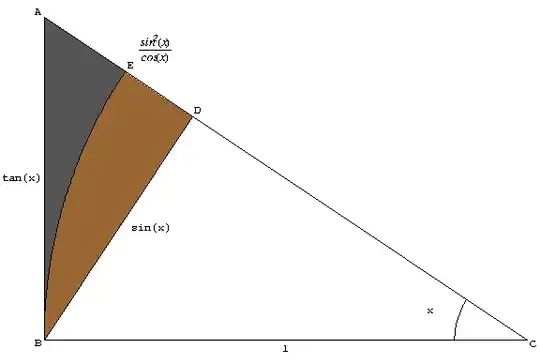I have a problem with solution of this limit: $$\lim_{x\to 0}{\frac{\tan{x}-x}{x^2}}$$ Of course, it's a very easy to solve, using (twice) L'Hôpital's rule, but I need to find out, how to do this without this rule.
I stuck in this point: $$\lim_{x\to 0}{\frac{\frac{\sin^2{x}}{x^2}\cdot\frac{1}{\cos^2{x}} - 1}{2x}}$$ Everything I need to know is how to eliminate $\frac{\sin^2{x}}{x^2}$, because - as my tutor said - I can't simply substitute $1$ for this expression.
Thanks for help.
PS: It's not a homework. My tutor showed this problem as a puzzle and said, that it would be a good exercise to solve this without L'Hôpital's rule.
EDIT: Here is a way I got to the point $\lim_{x\to 0}{\frac{\frac{\sin^2{x}}{x^2}\cdot\frac{1}{\cos^2{x}} - 1}{2x}}$:
\begin{align*} \lim_{x->0}{\frac{\tan{x}-x}{x^2}} &= \lim_{x->0}{\frac{(\frac{\sin{x}}{\sqrt{1-\sin^2{x}}}-x)\cdot (\frac{\sin{x}}{\sqrt{1-\sin^2{x}}}+x)}{x^2(\frac{\sin{x}}{\sqrt{1-\sin^2{x}}}+x)}}\\ &= \lim_{x->0}{\frac{\frac{\sin^2{x}}{x^2\cos^2{x}}-1}{x(\frac{\sin{x}}{x}\frac{1}{\cos{x}}+1)}}= \lim_{x\to 0}{\frac{\frac{\sin^2{x}}{x^2}\cdot\frac{1}{\cos^2{x}} - 1}{2x}} \end{align*}
